Varieties of red roses
Red roses in the garden are a gardening classic. The color red and its many shades always evoke enthusiastic emotions. No one remains indifferent to roses of such shades. A description of the best varieties of red roses with photos and names will help make the difficult choice of a beautiful seedling easier.
| Content:
|
Red roses. Video review of varieties:
Description of climbing roses with red flowers
The main feature of climbing roses is their bright aroma. The flowers of these roses are beautifully set off by the rich green leaves. Climbing roses are often used as living decorations for architectural buildings.
Sympathie
|
A beautiful variety with large velvety flowers of a rich red color. |
Rose Sympathy is a light-loving crop, so it is planted in sunny and well-ventilated areas.
- The size of the bush is 2-4 m in height, 2 m in width. The stems are long and strong. The leaves are large, glossy, dark green.
- The shape of the flowers is classic, size - 10 cm in diameter. The semi-double flower consists of 19-25 deep red petals. Inflorescences consist of 5-10 buds. The aroma of roses is weak and pleasant.
- The Sympathie rose blooms from early June to early September. Towards the end of the season the number of flowers decreases. Flowers do not lose their decorative value during the rainy season or in the scorching sun, and are resistant to sudden climate changes.
- The culture requires a well-lit area. It is best to plant it on the south side. Climbing rose Sympathy needs slightly acidic soil.
- The variety is highly resistant to diseases.
- Winter hardiness zone: 6 (from -23°C to -18°C).
Santana
|
The Santana rose variety does not require special growing conditions and painstaking care; it is a prominent representative of red climbing roses. |
The variety is distinguished by large flowers and a long flowering period. Buds cover the branches from the lowest tiers to the tops of the shoots.
- The height of erect shoots is 3 m.With certain pruning, you can grow it in the form of a scrub. The crown diameter is 1.5-2.0 m. The stems are elastic and do not require additional support.
- The flowers of the Santana rose are not double, with a diameter of 8-10 cm. The petals are velvety with a wide, wavy edge. Several inflorescences, consisting of 5-8 buds of bright red color, are simultaneously formed on one stem. The aroma is weak.
- The crop is re-flowering; two waves of flowering can be observed per season. The first wave begins in mid-June and lasts 1-1.5 months. After a short break, at the beginning of August, the rose again pleases with beautiful flowers until the end of September. Flowers are not susceptible to the harmful effects of rain and sun.
- The variety is sun-loving, but also develops well in partial shade. The soil needs to be nutritious and breathable.
- This crop is resistant to diseases and pests.
- Winter hardiness zone: 6 (from -23°C to -18°C). Despite its resistance to low temperatures, this variety is more suitable for planting in warm regions.
Florentina
|
Beautiful climbing rose with large scarlet flowers. |
- The plant grows in height up to 2-3 m, width up to 1 m. The leaves are large, glossy, dark green. The shoots are strong and strong. There are few thorns. The stems can entwine an arch, a fence, a terrace, or an architectural building. The crown is lush, spherical.
- The flowers are densely double, rich dark red in color, 7-9 cm in diameter. The opened buds have the shape of peonies with a yellow core. The number of petals is from 60 to 100 pieces. The aroma is weak, fruity-floral.
- The Florentina variety is a continuous flowering variety. Flowering lasts from June to September. The petals do not fade in the sun and are not spoiled by rain.
- The plant should be planted in partial shade.The soil must be fertile and breathable with a slightly acidic reaction (pH from 5.6 to 6.5).
- Rose Florentina is resistant to various fungal diseases.
- Frost resistance zone: 5 (from -29°С…-23°С).
Salita
|
The scarlet, lush flowers of the large-flowered climbing rose are compared to tongues of flame. |
Flowers of the Salita variety last a long time when cut. In cold regions, shoot growth is slower.
- Tall bush - 2.5-3 m high, 1-1.5 m wide. Stems with thorns. The foliage is dark, dense, shiny.
- Double flowers, 7-9 cm in diameter. Shape of a classic tea rose. The bud consists of 25-40 petals. Up to 5 flowers are formed in one inflorescence. The color of the petals is bright red, scarlet. The aroma is light, with fruity notes.
- Flowering is continuous, abundant from May to September. In the midday sun, the petals get burned. Heavy rains do not affect the decorative appearance of the buds.
- The plant should be planted in partial shade. The soil must be fertile and breathable with a slightly acidic reaction (pH from 5.6 to 6.5).
- High immunity to powdery mildew and pests, medium immunity to black spot.
- Belonging to climate zone 4 (-34°C...-29°C) allows the variety to be grown in central Russia and in the Moscow region.
Baikal
|
Rose Baikal attracts attention with its good immunity from viruses, frost resistance, abundant and long-lasting flowering. |
This variety is used to create beautiful garden compositions.
- Variety Baikal is a tall plant, 2-3 m high, 1 m wide. It is distinguished by the rapid growth of side shoots covered with thorns. The leaves are dark green, glossy.
- The flowers are moderately double, 7-9 cm in diameter, consisting of 30-35 velvety petals. Color: bright red or light ruby.The flowers form lush inflorescences. The aroma is weak, with sweet and fruity notes.
- Baikal belongs to the group of re-flowering plants. Blooms for a long time - from mid-June to the end of October. Flowers withstand prolonged rains well, but suffer from the scorching rays of the sun.
- Areas with partial shade for plants at midday are suitable for planting. In strong sun, roses fade quickly. The site must be protected from winds and drafts.
- The climbing rose Baikal is disease resistant.
- Winter hardiness zone: 6 (from -23°C to -18°C).
Don't forget to read:
Hybrid tea red roses
Bushes of hybrid tea roses look great in parks, flower beds, flower beds, rose gardens, mixed borders and gardens. Roses from this group look great when cut.
Red Naomi
|
Fragrant, goblet-shaped flowers with a rich ruby hue are ideal for making bouquets; they remain fresh for a long time both on the bush and in the vase, and their long, strong peduncles are almost devoid of thorns. |
- The bushes of the plant are erect, 0.8-1.3 m high, 0.4-0.7 m wide. The crown is moderately spreading. The shoots are neat and powerful. There are few thorns. The leaves are smooth, matte, dark green.
- The flowers are goblet-shaped, large, densely double, arranged singly or in inflorescences. Dark red petals are arranged in a spiral in the bud in the amount of 45-55 pieces. The flower size is 11-13 cm. The aroma is pleasant, sweet.
- Flowering is continuous, lasting from June to November. Flowers are resistant to precipitation and wind; when they bloom, they do not drop their petals, but gradually fade right on the bush.
- To plant a seedling, choose a place well lit by the sun and protected from drafts.
- To protect against diseases and pest attacks, regular preventive measures are necessary.
- Belonging to climate zone 4 (-34°C...-29°C) allows the variety to be grown in central Russia and in the Moscow region.
Norita
|
A powerful and robust Norita rose bush is characterized by lush, large red-black flowers with a pleasant aroma. |
In a vase with water, flowers can remain fresh for 7-10 days.
- Erect shoots, reaching a height of 1-1.2 m, are prone to branching. The crown is dense with large dark green leaves, 0.5-0.7 m in diameter. There are few thorns.
- Red-black buds gradually open into lush flowers with a diameter of 8-12 cm. The shape of the flower is cupped with a prominent center. The petals, in the amount of 25-30 pieces, are located tightly to each other, slightly curled outward. The reverse side of the petals is lighter, and the lower petals are almost black. The aroma is intense, with sweet and fruity notes. One bud is formed on each stem.
- The Norita variety is a continuously flowering variety. Flowering lasts from June to October. The flowering pattern is abundant, colorful, and long-lasting, as the flowers remain on the peduncles for two weeks.
- The crop prefers loose, drained, moist soil. Acidity level - low or neutral. The most suitable are loams or black soils. It is advisable to plant on the sunny side with light shade.
- Rose Norita has high immunity and is rarely susceptible to diseases and insect attacks.
- Winter hardiness zone: 6 (from -23°C to -18°C). In the middle zone and Moscow region, the variety needs shelter.
Burgund
|
The hybrid tea rose variety Burgundy is frost-resistant, rarely gets sick and tolerates bad weather well. |
- The size of the bush is 0.8-1.5 m in height, 0.8 m in width. Stems are straight with sparse thorns. The leaves are rich green, dense, matte.
- The flower is double, cup-shaped, 8-10 cm in diameter. The bud consists of 35-40 petals, curving along the edges when fully open. The color is red-crimson, rich. 1–3 buds are formed in the inflorescence, often single. The aroma is exquisite.
- Flowering continues continuously from June to September. Rose Burgundy is resistant to rainy and hot weather. The bright color of the leaves will not fade under bright sunlight.
- The soil for growing needs fertile, breathable, low acidity. Location: partial shade, sun.
- To protect against diseases and pest attacks, regular preventive measures are necessary.
- Belonging to climate zone 4 (-34°C...-29°C) allows the variety to be grown in central Russia and in the Moscow region.
Lovely Red
|
Rose Lovely Red is a compact bush with large dark red buds. The variety is valued for its beautiful and long-lasting flowering. |
The buds bloom before the first frost. They last a long time when cut.
- The bush is compact, 1 m high, 0.5 m wide. The leaves are dark green, large. Stems are straight, without thorns.
- The flower, 9-10 cm in size, has the shape of a tall glass. The main color is dark red, saturated; when blooming, the outer petals become almost black along the contour. There are 30-35 petals in a bud. 1-3 flowers are formed on one stem. The aroma is weak, light.
- Wave-like flowering continues from June to October.
- The location must be sunny or semi-shaded.The crop prefers loose, fertile, well-drained soils.
- Resistance to powdery mildew and black spot is high.
- Winter hardiness zone: 6 (from -23°C to -18°C).
Red varieties of floribunda roses
Red varieties of roses from the floribunda group are distinguished by lush and long-lasting flowering, a wide selection of colors and high quality inflorescences. They are resistant to diseases and pest attacks, tolerate wintering well, and are unpretentious in care.
Mona Lisa
|
Rose Mona Lisa is distinguished by its beautiful flowers of a classic shape, dense crown and decorative effect. |
The variety has been awarded many awards at exhibitions in Italy, Germany, and France. Long lasting when cut.
- The bush is compact, 0.6-0.8 m high, 0.6 m wide. The crown is dense and lush. The leaves are small, glossy, dense. Thorns are rare.
- The size of the flowers is 10-12 cm in diameter. The structure is densely double, the number of petals is 80-85 pieces. The flowers are dark red, formed in inflorescences of 3-5 pieces. The aroma is delicate, intensifies in the evening and in the heat.
- This is a repeat flowering variety. Blooms from early June to early October. Flowering is abundant and continuous. Mona Lisa tolerates hot weather and rain well.
- A well-lit area is suitable for growing, with light partial shade at noon. The soil must be loose, nutritious, with a slightly acidic or neutral reaction. A loamy or sandy loam substrate is suitable.
- Resistance to powdery mildew and black spot is high.
- Winter hardiness zone: 6 (from -23°C to -18°C).
Little Red Riding Hood (Rotkappchen)
|
The densely double floribunda Red Riding Hood, as in the photo, will decorate a flower bed, garden or summer cottage. |
The absence of thorns and the chic color of the petals make the variety in demand among gardeners and florists.
- The size of the bush is 0.6-0.9 m in height, 0.5 m in width.The shoots are straight, without thorns. The leaves are medium sized, dark green, glossy.
- The flowers are cup-shaped, 9 cm in diameter, densely double. Each consists of 50 petals. Inflorescences are few-flowered, 1-3 buds. The aroma is weak.
- This is a repeat flowering variety. Blooms intensively from early June to September.
- A well-lit area is suitable for growing, at noon - with light partial shade, without drafts. The soil for growing the variety is sandy or loamy, nutritious, and weakly acidic. There must be no wind or drafts.
- Disease resistance decreases in wet weather; preventive treatments are necessary.
- Winter hardiness zone: 6 (from -23°C to -18°C). Shelter for the winter is necessary.
Niccolo Paganini
|
This variety is chosen for its excellent immunity, stable flowering and fragrant large flowers. Their color is rich, dark red, they densely cover the bush with powerful dark green foliage. |
- The height of the bush is 0.7-0.9 m, width is 0.6 m. The crown is spherical. The foliage is dense and matte. There are few thorns.
- Flowers, 8-10 cm in diameter, consist of 30-35 petals. 5-12 buds are formed in inflorescences. The color is dark red with a velvety tint. Do not fade within two weeks. The aroma is strong.
- Flowering is abundant and long lasting, occurring in several waves, almost continuously, from June to October. The Niccolo Paganini variety is resistant to heat and sun, and to prolonged rains.
- A well-lit area is suitable for growing, at noon - with light partial shade, without drafts. The soil must be loose, nutritious, with a slightly acidic or neutral reaction. A loamy or sandy loam substrate is suitable.
- To protect against diseases and pest attacks, regular preventive measures are necessary.
- Winter hardiness zone: 6 (from -23°C to -18°C). The variety grows and develops well in the Moscow region, St. Petersburg, and Leningrad region.
Pussta
|
Rose Pussta is a low-growing floribunda with scarlet flowers. |
- A low plant 0.4-0.5 m high, 0.5 m wide. The leaves are bright green, the stems are straight.
- The flowers are velvety, 7-8 cm in diameter. 2-5 buds are formed in inflorescences. The buds are spherical and bloom into semi-double dark red flowers with golden stamens. There is no aroma.
- This is a repeat flowering variety. Blooms from early June to early October. The flowers are resistant to rain and tolerate hot summers well.
- For cultivation, choose a well-lit area, at midday - with light partial shade, without drafts. The soil must be loose, nutritious, with a slightly acidic or neutral reaction. A loamy or sandy loam substrate is suitable.
- Winter hardiness zone: 6 (from -23°C to -18°C).
Do not miss:
Peony varieties of red roses
The main advantage of the peony rose is the presence of large multi-petal buds. Pure red color is rare among peony roses. Most of the inflorescences have a coral, crimson, and even purple hue. Peony-shaped red roses are used to decorate gardens and greenhouses, and are also used as cut flowers to make bouquets.
Benjamin Britten
|
A popular rose variety with an unusual bud structure - the central petals are much smaller than the outer ones. |
Flowers are undemanding in care and delight with long and lush flowering.
- The bushes are compact, grow up to 1 meter in height, up to 1.5 m in width. The foliage is beautiful, matte.
- The flowers are large, up to 12 cm in size. The buds do not open completely. The outer petals are larger than the inner ones.The color is red with an orange tint. On the shoots, 3-5 flowers are formed. The aroma is subtle, fruity.
- Flowering is continuous, abundant from June to September. The variety tolerates rain well.
- The soil for growing needs fertile, breathable, low acidity. Location: partial shade, sun.
- To protect against diseases and pest attacks, regular preventive measures are necessary.
- Winter hardiness zone: 6 (from -23°C to -18°C).
Tradescant
|
A variety of peony roses with the darkest shade of petals and the shortest in the group with a red color. |
- Plant height 0.6-0.75 m, width 0.75 m. The shoots are arched, with sparse thorns. The crown is spreading. The leaves are light green.
- Flowers, 7 cm in diameter, dark red. As the bud blooms, it becomes burgundy, almost black. Flowers are collected in brushes of 3-5 pieces.
- This is a repeat flowering variety. Blooms from June to October. Poor resistance to rain.
- For cultivation, choose a well-lit area, at midday - with light partial shade, without drafts. The soil must be loose, nutritious, with a slightly acidic or neutral reaction. A loamy or sandy loam substrate is suitable.
- Disease resistance is average.
- Belonging to climate zone 4 (-34°C...-29°C) allows the variety to be grown in central Russia and in the Moscow region.
Munstead Wood
|
Munstead Wood rose is resistant to infections and temperature changes. Blooms profusely and for a long time. |
Thanks to its compactness, it can be grown in the smallest areas.
- The shrub grows no more than 1 meter in height, 0.5-0.6 m in width.
- Raspberry flowers, 10-12 cm in size, are collected in inflorescences of 5 pieces. Petals with wavy edges.The outer side of the petal is crimson, and the inner side is burgundy-purple with a velvet coating. The aroma is rich and sweet.
- Munstead Wood is a repeat bloomer. Flowers do not burn in the sun; during periods of prolonged rains, flowers that have collected moisture become soaked and droop, and the buds may not open.
- An area where light partial shade will save the petals from the midday heat is more suitable for planting.
- High immunity to powdery mildew and pests, medium immunity to black spot.
- Winter hardiness zone: 6 (from -23°C to -18°C).
Red Piano
|
Among the peony varieties of roses, it is the Red piano roses that are most similar to peonies. |
- The bush is 1-1.2 m high and wide. The crown is spherical, the foliage is dark green, glossy. The shoots are erect.
- Flowers, 811 cm in diameter, double, collected in brushes of 3 to 8 pieces. The buds are densely packed with red petals. The aroma is reminiscent of ripe raspberries. The color of the petals is red.
- The flowering of the shrub is quite lush and abundant. Inflorescences appear on it throughout the entire growth period, from June to October.
- It is better to plant the rose in an area with bright, diffused light, without drafts. This improves conditions for flowering. Red piano prefers nutritious, loose, well-drained soil with a slightly acidic reaction.
- Winter hardiness zone: 6 (from -23°C to -18°C).
Park roses with red flowers
Park roses, especially red ones, are plants that attract the eye with their exquisite beauty and restraint.
Cuthbert Grant
|
The colorful variety has high winter hardiness and disease resistance. Cuthbert Grant is loved by gardeners for its hardiness and appearance. |
The bushes are distinguished by their rapid formation speed. Plants planted in open ground do not require special care.
- The shrub is vigorous, spreading, 1-1.3 m high. Stems are straight, drooping. The leaves are greenish-gray, glossy.
- The flowers are semi-double, 8-10 cm in diameter. The inflorescence is collected from 5-9 flowers. The petals are dark red or purple velvet. The stamens are long, lemon-colored. The aroma is pleasant.
- Cuthbert Grant is an early flowering variety. Flowering occurs in waves over 4 months.
- According to the description and photo, it is better to plant the rose in partial shade. There are no special requirements for the soil.
- Immunity to diseases is high.
- Belonging to climate zone 4 (-34°C...-29°C) allows the variety to be grown in central Russia and in the Moscow region.
Morden Fireglow
|
Repairable appearance with good resistance to winter cold. |
- The bush is compact, 1 m wide and high. The foliage is dark green, beautiful even without flowers.
- The buds are large, goblet-shaped, collected in inflorescences of 5 pieces. As they open, the petals, of which there are about 28 in one flower, gradually become fiery orange-red. Flowering is fragrant.
- The Canadian rose blooms from June to September and is a re-blooming crop. It blooms for the first time in early spring, and again at the end of the summer season. The first wave of flowering is the most abundant. Does not tolerate wet weather well, in which the buds may not open.
- This rose prefers soil rich in humus. A suitable place for the culture would be a well-ventilated corner of the site where it is constantly sunny.
- The Morden Fireglow variety has high immunity, but is sometimes susceptible to powdery mildew and black spot, so preventive treatments should be carried out.
- Frost resistance zone: 5 (from -29°…-23° C).
Fluorescent
|
Tall rose Fluorescent is abundantly covered with flowers during flowering. |
- The variety is 1.3-1.5 high. Stems are vertical, well branched. The foliage is dark green.
- Double flowers are deep red and bright. Each contains 26-40 petals. There is no aroma.
- Flowering is continuous, from June to October. The flowers are not subject to shedding or fading, and are very resistant to rain.
- The location must be sunny or semi-shaded. The crop prefers loose, fertile, well-drained soils.
- Disease resistance is average and requires preventive measures.
- Winter hardiness zone: 6 (from -23°C to -18°C).
Do not miss:
Ground cover red roses
Roses of the ground cover group have a persistent pleasant aroma, but the color of the flowers is not very diverse.
Rody
|
Gardeners love the variety of ground cover roses Rody for its abundant flowering, during which the plant is strewn with flowers so that the leaves are not visible. |
- The bush is 0.6-0.7 m high, 1.2-2 m wide. The crown is dense, branched. There are a lot of leaves. The shoots are short, drooping under the weight of the flowers.
- The flowers are semi-double, 5 cm in diameter. The color of the petals is strawberry-red. 3-12 buds are formed in the brushes. The aroma is weak. Occasionally it may be affected by black spotting.
- Rhodi is a continuously flowering shrub with abundant bud production. It does not react well to heavy rain; the petals do not fade in the sun.
- The soil for growing the variety is sandy or loamy, nutritious, and weakly acidic. The lighting must be good. There must be no wind or drafts.
- Resistance to diseases is average, preventive treatments should be carried out. Resistance to diseases is average, preventive treatments should be carried out.
- Winter hardiness zone: 4 (-34°…-29°С). This allows the variety to be grown in central Russia and in the Moscow region.
Fiona
|
Rose Fiona is a luxurious landscape beauty. |
- The height of an adult bush is 0.8-1 m, width 2 m. The shoots are drooping. The leaves are shiny and small.
- The diameter of the double flower is 5-7 cm, the color is scarlet or bright red. The inflorescence consists of 5-15 buds.
- Flowering continues from June until the onset of frost.
- The soil for growing the variety is sandy or loamy, nutritious, and weakly acidic.
- Resistance to diseases is average, preventive treatments should be carried out.
- Frost resistance zone: 5 (from -29°…-23° C).
Scarlet
|
The Scarlet variety is one of the hardiest ground covers. Unpretentious, has high resistance to diseases and pest attacks. Does not require annual pruning. |
- The height of the crop is 0.5 m. The leaves are dark green, glossy.
- The flowers are deep red, double, 3-5 cm in diameter. Up to 10 buds are formed in the inflorescence.
- Flowering lasts from early June to late September.
- The soil for growing is sandy or loam, nutritious, slightly acidic.
- Resistance to diseases is average, preventive treatments should be carried out.
- Winter hardiness zone: 6 (from -23°C to -18°C).
Matador
|
The ground cover variety Matador is winter-hardy and unpretentious in care. Looks great in single and group plantings. |
- The flowers are pale crimson, turning dark pink in the sun. It forms a lot of brushes on the shoot, each with up to 15 buds.
- Rose Matador belongs to the group of repeat bloomers. Flowering lasts from early June to late September. The buds bloom together, so the plant is always bright and beautiful.
- Grows well in sun and partial shade.Suitable soil is chernozem or light loam, breathable, nutritious, slightly acidic.
- Resistance to diseases is average, preventive treatments should be carried out.
- Belonging to climate zone 4 (-34°...-29°C) allows the variety to be grown in central Russia and in the Moscow region.
Don't forget to read:
Similar articles about rose varieties:
- Varieties of peony roses with photos and names ⇒
- Description of the 25 best varieties of floribunda roses with photos and names ⇒
- Miniature roses: the most beautiful varieties with photos and descriptions ⇒
- The best varieties of green roses with photos and names ⇒
- Description of bicolor and variegated varieties of hybrid tea, climbing and floribunda roses ⇒
- Varieties of roses with pink flowers with photo descriptions and names ⇒
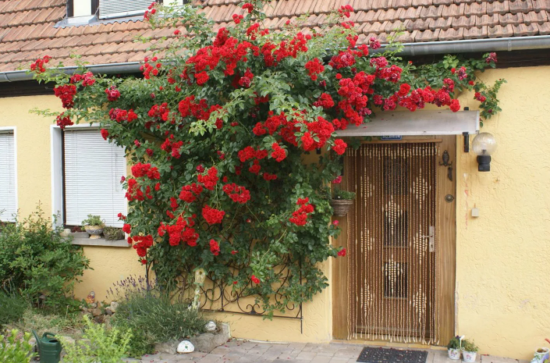
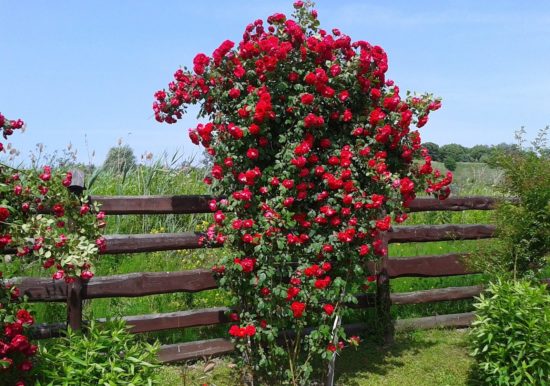
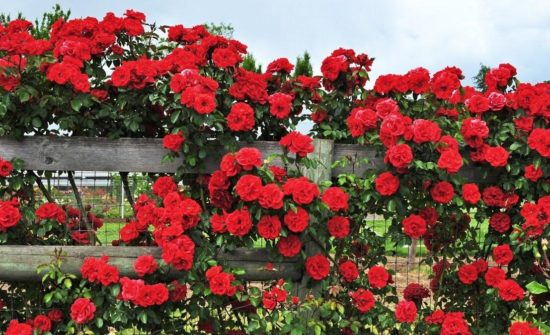
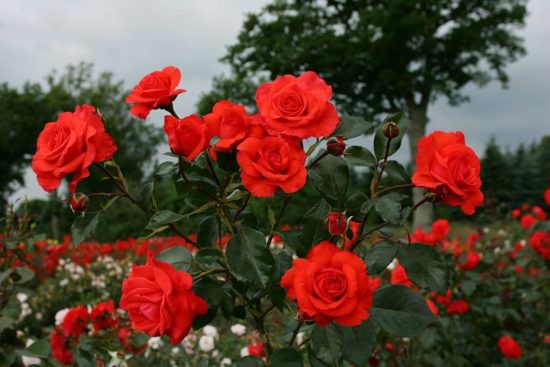
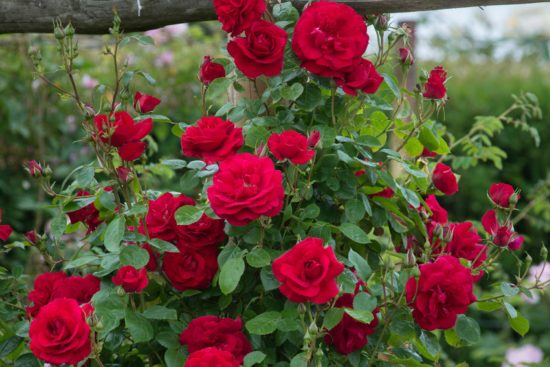
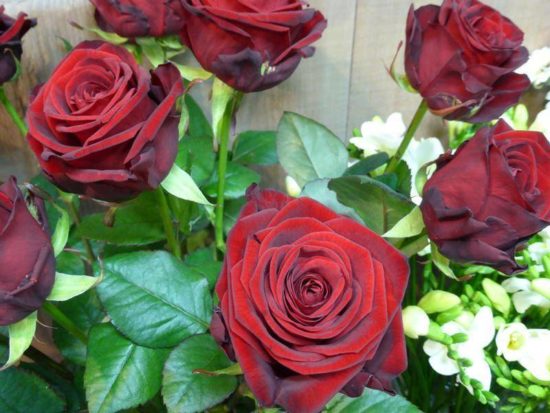
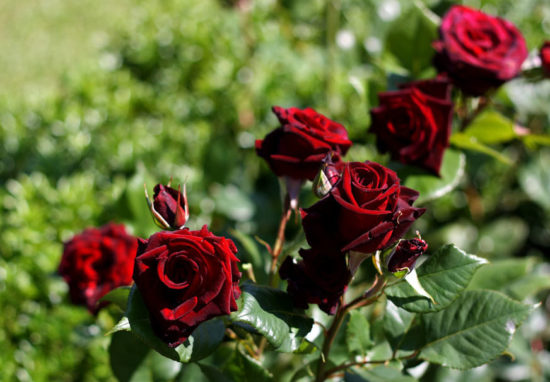
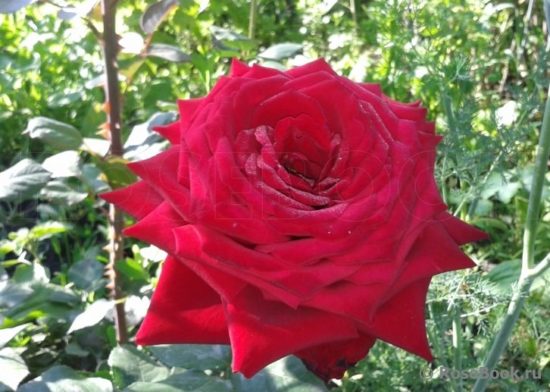

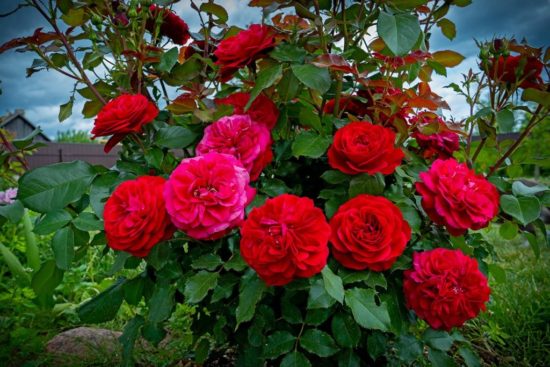
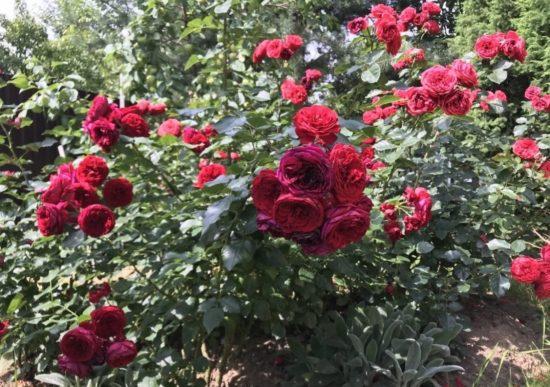
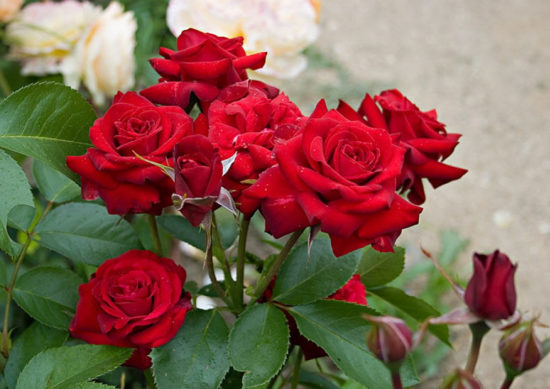
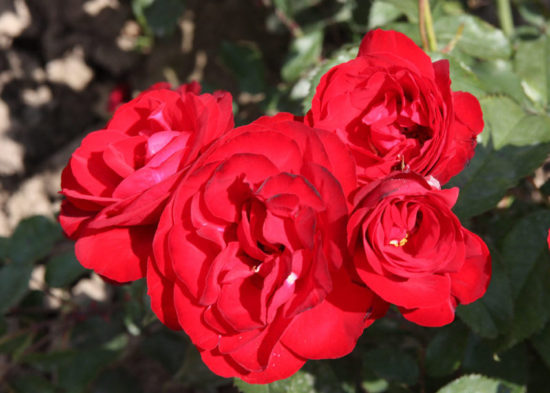
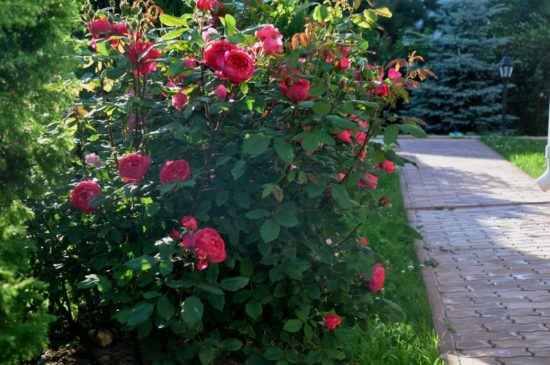
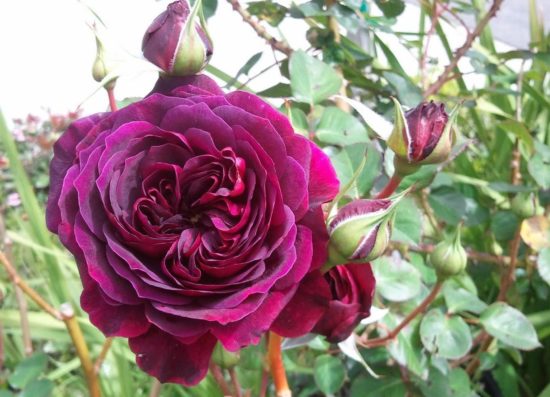
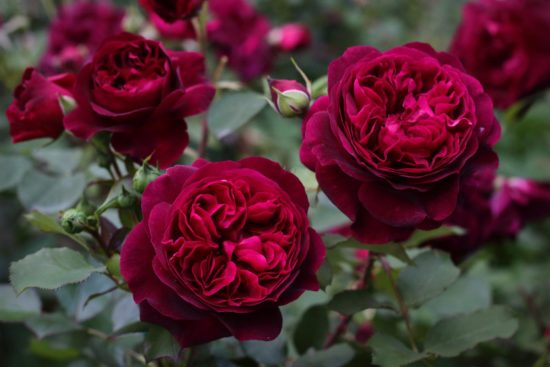
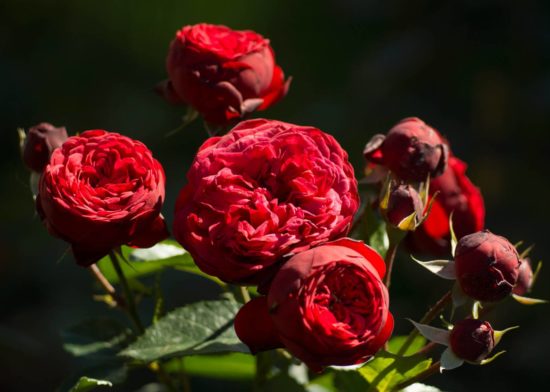
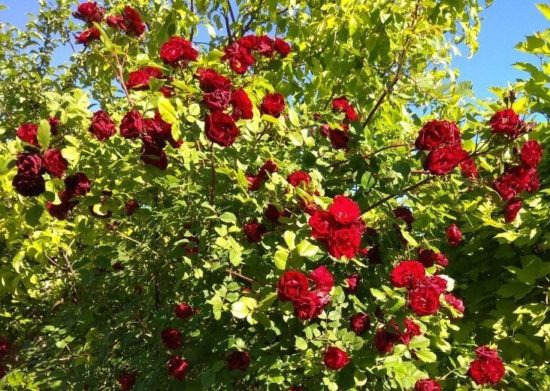
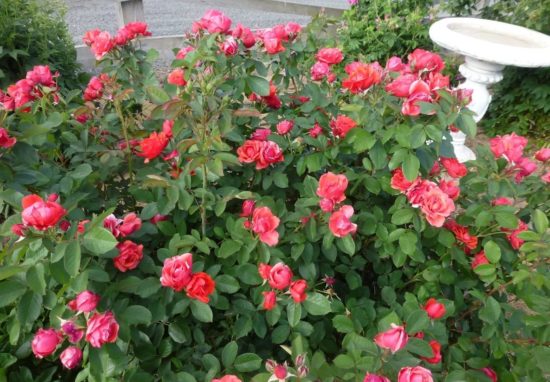
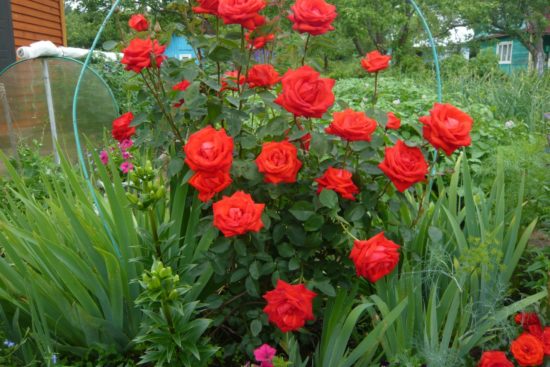
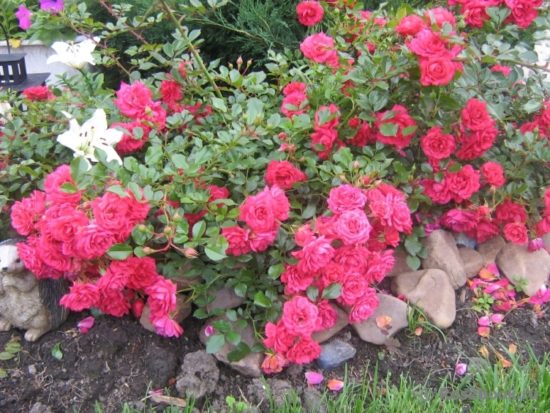

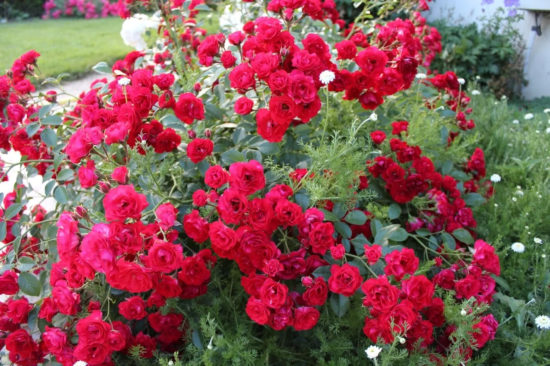
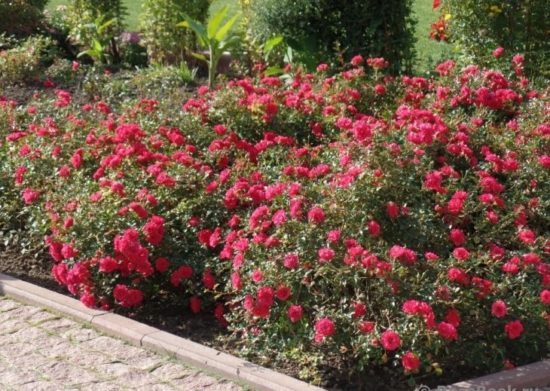

 (1 ratings, average: 4,00 out of 5)
(1 ratings, average: 4,00 out of 5) CUCUMBERS NEVER GET SICK, I'VE BEEN USING ONLY THIS FOR 40 YEARS! I SHARE A SECRET WITH YOU, CUCUMBERS ARE LIKE THE PICTURE!
CUCUMBERS NEVER GET SICK, I'VE BEEN USING ONLY THIS FOR 40 YEARS! I SHARE A SECRET WITH YOU, CUCUMBERS ARE LIKE THE PICTURE! You can dig a bucket of potatoes from each bush. Do you think these are fairy tales? Watch the video
You can dig a bucket of potatoes from each bush. Do you think these are fairy tales? Watch the video
 How our fellow gardeners work in Korea. There is a lot to learn and just fun to watch.
How our fellow gardeners work in Korea. There is a lot to learn and just fun to watch. Eye trainer.The author claims that with daily viewing, vision is restored. They don't charge money for views.
Eye trainer.The author claims that with daily viewing, vision is restored. They don't charge money for views. A 3-ingredient cake recipe in 30 minutes is better than Napoleon. Simple and very tasty.
A 3-ingredient cake recipe in 30 minutes is better than Napoleon. Simple and very tasty. Therapeutic exercises for cervical osteochondrosis. A complete set of exercises.
Therapeutic exercises for cervical osteochondrosis. A complete set of exercises. Which indoor plants match your zodiac sign?
Which indoor plants match your zodiac sign? What about them? Excursion to German dachas.
What about them? Excursion to German dachas.